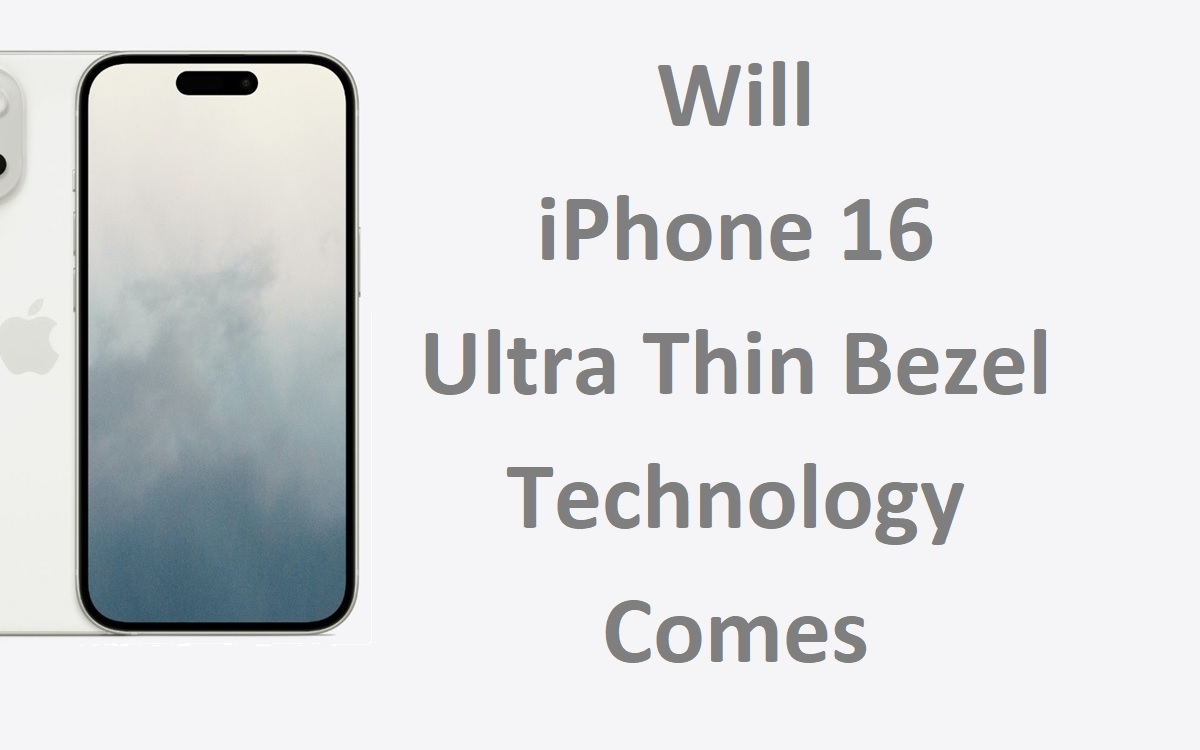Introduction
In the ever-evolving world of smartphone design, minimalism has become the holy grail. Manufacturers are constantly pushing the boundaries of innovation, striving to create devices that offer an uninterrupted, seamless visual experience. Apple, a pioneer in this realm, is poised to take a giant leap forward with the highly anticipated iPhone 16 Ultra Thin Bezel Technology. Rumors and leaks have been swirling, hinting at the implementation of cutting-edge ultra-thin bezel technology, promising to redefine the way we interact with our smartphones.
Recent Released:How to Download And Use Bitrix24 Mobile CRM for Apple
The Bezel Conundrum
Bezels, the borders that frame a smartphone’s display, have long been a contentious issue in the design world. While they serve a functional purpose, housing essential components like speakers, cameras, and sensors, their presence can detract from the overall aesthetic appeal and immersive experience. Minimizing bezels has become a relentless pursuit, with manufacturers employing various techniques to shrink these borders to the absolute minimum.
Apple’s Innovative Approach: Border Reduction Structure (BRS)
At the forefront of this bezel-minimizing crusade is Apple’s rumored implementation of a groundbreaking technology called Border Reduction Structure (BRS). This revolutionary approach aims to integrate critical components directly into the display panel, eliminating the need for bulky bezels and maximizing the screen-to-body ratio.
How BRS Works
The Border Reduction Structure is a complex engineering feat that involves strategically positioning key components, such as the front-facing camera, ambient light sensor, and earpiece, within the active display area. By doing so, these components no longer require dedicated cutouts or bezels, resulting in a truly borderless design.
One of the key advantages of BRS is its ability to maintain the structural integrity of the display while accommodating these integrated components. This is achieved through the use of advanced materials and manufacturing techniques, ensuring that the display remains robust and durable despite the intricate component integration.
Unparalleled Visual Experience
The implementation of ultra-thin bezels through BRS technology promises to elevate the visual experience on the iPhone 16 to unprecedented levels. With virtually no borders framing the display, users can expect an immersive, uninterrupted viewing experience that blurs the line between the physical device and the digital world.
This borderless design not only enhances media consumption and gaming but also offers a more intuitive and natural interaction with the device. Gestures and touch inputs will feel smoother and more seamless, as the lack of bezels eliminates any visual barriers between the user and the content on the screen.
Design Elegance and Efficiency
Beyond its functional benefits, the ultra-thin bezel technology in the iPhone 16 is poised to redefine the very concept of smartphone design elegance. With a sleek, minimalistic aesthetic, the device will exude a sense of sophistication and modernity that is sure to captivate consumers.
Moreover, the reduction in bezel size will allow Apple to maximize the available surface area for the display, potentially enabling larger screens without increasing the overall footprint of the device. This efficient use of space not only enhances the user experience but also demonstrates Apple’s commitment to innovation and attention to detail.
Challenges and Considerations
While the prospect of ultra-thin bezels is undoubtedly exciting, it is not without its challenges. One of the primary concerns is the potential impact on device durability and structural integrity. With components integrated directly into the display panel, there is a risk of increased vulnerability to impacts and scratches.
Apple, known for its meticulous engineering and rigorous testing, is likely to have addressed these concerns through the use of advanced materials and reinforcement techniques. However, it remains to be seen how the Border Reduction Structure will perform in real-world scenarios.
Another consideration is the potential impact on battery life and thermal management. As components become more densely packed within the device, efficient heat dissipation and power management will be crucial to ensure optimal performance and longevity.
Market Impact and Competition
If Apple succeeds in implementing ultra-thin bezel technology in the iPhone 16, the ripple effect across the smartphone industry will be significant. Competitors will undoubtedly scramble to match or exceed Apple’s achievement, triggering a new wave of innovation and design iterations.
This intense competition could potentially accelerate the adoption of borderless displays across the industry, benefiting consumers with a wider range of choices and driving further advancements in related technologies, such as foldable displays and augmented reality integration.
Table: Rumored iPhone 16 Models and Expected Bezel Sizes
| Model | Expected Bezel Size (mm) |
| iPhone 16 Pro Max | 1.2 |
| iPhone 16 Pro | 1.4 |
| iPhone 16 | 1.6 |
| iPhone 16 Mini | 1.8 |
Note: These bezel sizes are based on rumors and leaks and may not reflect the final product specifications.
Conclusion
The introduction of ultra-thin bezel technology in the iPhone 16 represents a significant milestone in the pursuit of borderless perfection. Apple’s rumored implementation of the Border Reduction Structure (BRS) promises to revolutionize the smartphone design landscape, offering an unparalleled visual experience and pushing the boundaries of what was previously thought possible.
While challenges and considerations exist, Apple’s track record of innovation and its commitment to delivering exceptional products suggest that the company has likely addressed these concerns with its characteristic attention to detail and engineering prowess.
As we eagerly await the official unveiling of the iPhone 16, one thing is certain: the future of smartphone design is borderless, and Apple is poised to lead the charge in this new era of immersive and visually stunning devices.


